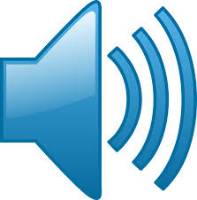Summary
This lesson is the first in a series of lessons, Wave Inventions, related to light and sound waves and inventors. In this lesson, using household objects, students will plan and conduct investigations to provide evidence that vibrating materials produce sound. The lesson will culminate with students creating their own instruments that demonstrate how sound is produced.
Essential Question(s)
How is sound made?
Snapshot
Engage
Students will use a card sort activity to explore how instruments make sound.
Explore
As a class, students will complete an investigation to observe how moving rulers make sound.
Explain
Students will discuss the concept "when things vibrate they make sound."
Extend
Students will conduct an investigation using various sizes of rubber bands and containers.
Evaluate
Students will design an instrument and present it to the class. They must decide how the instrument fits into the instrument card sort from the Engage activity.
Materials
Instrument Card Sort
I Notice, I Wonder Chart
Rulers (a variety of materials: wooden, metal, plastic)
Rubber bands (a variety of sizes)
Containers that the rubber bands can fit around (different types and sizes)
Instrument making materials (rubber bands, containers, string, rice/beans, paper, foil pans, paper towel of toilet paper rolls)
Engage
Pass out copies of the Instrument Card Sort. Students should sort the instrument pictures based on their own experiences and understandings of the instruments. Explain to students that instruments are organized into instrument families. Ask students to organize the instruments into groups of similar instruments. Some probing questions might be “How is that instrument played?” or “What are the different parts of the instrument?”
Discuss with the students: How do the instruments make sounds? What types of instruments are there? Where would a piano fit in your sort? Do instruments make only one sound?
Explore
Use the I Notice, I Wonder strategy to capture students' observations and wonderings as you use different types of rulers to produce sound. Lead the demonstration with the students and establish safety procedures while investigating. Remind students that we often use our five senses to make observations, but in this investigation we won’t use taste or smell.
What happens when we flick the ruler? (Record students' notice/wonder comments.) Sample Answers: I noticed that the ruler moved up and down really fast. I wonder if it can move slow? I noticed the ruler moved so fast it looked blurry. I wonder if it would hurt if I touched it? I noticed it made a sound when it moved. I wonder if it would make a different sound if it moved differently?
What happens when we make the ruler longer and shorter? (Record students' notice/wonder comments.) Sample Answers: I notice when the ruler is longer it sounds deeper. I wonder if the sound gets higher if we make the ruler shorter?
What happens when we use a different type of ruler? (Record students' notice/wonder comments.) Sample Answers: I notice that the wooden ruler doesn’t move as much as the plastic ruler. I wonder if the sound is different?
Students should draw a picture of what they observe. You can draw an example picture to get them started.
Explain
Using the Think, Pair, Share strategy, ask students to consider the following questions:
How does the ruler make sound?
Why does the ruler move the way it does?
Repeat the demonstration and add to the conversation using key vocabulary terms (vibration, waves, communication, sound). If the students haven’t gotten there, explain the concept that when things vibrate they make sound and sound makes things vibrate because of the sound waves.
Have students add to their pictures and revise them if needed. Have them add arrows and the vocabulary words to describe their pictures.
Extend
Using various sizes of rubber bands and various containers, have students conduct an investigation. In small groups they will investigate the following:
What causes a sound to be louder or softer?
What makes a sound higher or lower?
Expect this to take 5-15 minutes. Students may put the rubber bands around the containers and pluck them. They may try different sizes of containers and different lengths/sizes of rubber bands to find the different sounds.
After the investigation, ask students to share what they learned about how to make different sounds with different materials. Ask the class, what they noticed about movement and sounds.
Evaluate
Have students use the following (suggested) materials to design an instrument that makes two different sounds.
Rubber bands
Containers
String
Rice/beans
Paper
Foil pans
Paper towel or toilet paper rolls
Using a Gallery Walk, have students present their instruments to the class. As part of their presentation, students should explain where their instrument would fit within the card sort from the Engage activity.
Resources
K20 Center. (n.d.). Gallery walk / carousel. Strategies. Retrieved from https://learn.k20center.ou.edu/strategy/d9908066f654727934df7bf4f505a54d
K20 Center. (n.d.). I notice, I wonder. strategies. Retrieved from https://learn.k20center.ou.edu/strategy/d9908066f654727934df7bf4f507d1a7
K20 Center. (n.d.). Think-pair-share. Strategies. Retrieved from https://learn.k20center.ou.edu/strategy/d9908066f654727934df7bf4f5064b49


